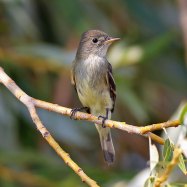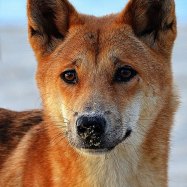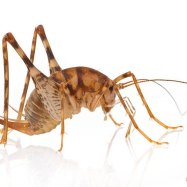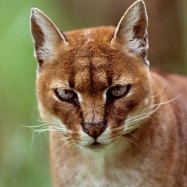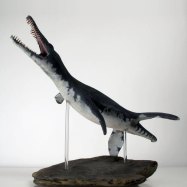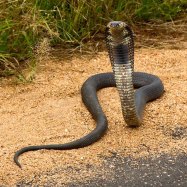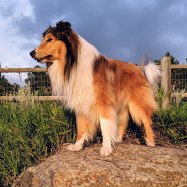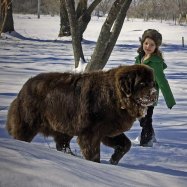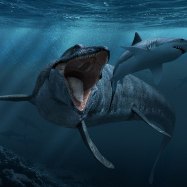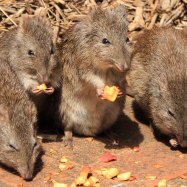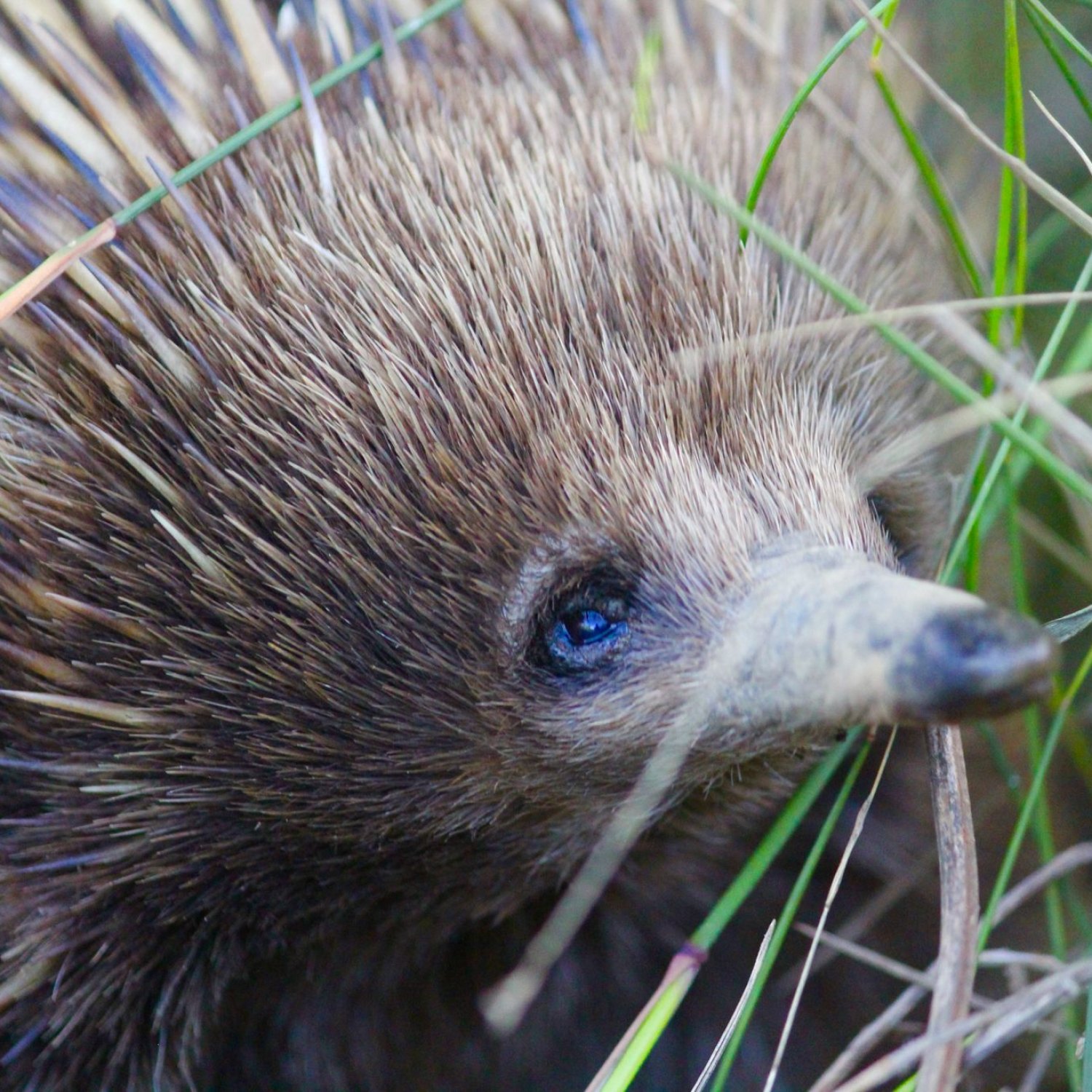
Echidna
Echidnas measure 30 to 45 centimeters in length, with females being slightly larger than males.
Echidnas, also known as spiny anteaters, are unique animals found in Australia and Tasmania. With a compact body, short limbs, and a long, tubular tongue, they measure between 30 to 45 centimeters in length. These adorable creatures belong to the Tachyglossidae family, and fun fact- females are slightly larger than males! Have you seen one in the wild? #Echidna #AustralianAnimals #Tasmania
Animal Details Summary:
Common Name: Echidna
Kingdom: Animalia
Habitat: Echidnas inhabit a wide range of habitats, including forests, woodlands, grasslands, and deserts.
The Fascinating World of Echidnas: Australia's Unique Egg-Laying Mammal
When we think of mammals, we usually imagine creatures giving birth to live young and nursing them. However, there is one group of mammals that defies this norm – the monotremes. And among these egg-laying mammals, the echidna stands out as a special and unique creature.Scientifically known as Tachyglossus aculeatus, the echidna is a fascinating animal that belongs to the family Tachyglossidae Echidna. This species is commonly found in Australia and New Guinea and is the only mammal in Australia belonging to the order Monotremata. With its spiky fur, long snout, and unusual reproductive method, the echidna has captured the interest of animal lovers and scientists alike. In this article, we will delve into the world of echidnas and discover what makes them so special.
The Class and Order of Echidnas
Before diving into the unique features of echidnas, let's first understand where they belong in the animal kingdom. Echidnas fall under the kingdom Animalia, which includes all animals. They also belong to the phylum Chordata, which encompasses all animals with a spinal cord. As mammals, they belong to the class Mammalia, a diverse group that includes over 5,400 species. However, what sets echidnas apart is their order – they are the only surviving species in the order Monotremata.A Unique Reproductive Process
One of the most interesting facts about echidnas is their reproductive method Emerald Tree Monitor. As mentioned earlier, monotremes are unique egg-laying mammals, and echidnas are no exception. The female echidnas lay eggs, which hatch after ten days. They carry the eggs in a pouch, similar to marsupials, until they hatch. The young echidnas, called puggles, feed on milk produced by special patches on their mother's skin, known as milk patches.Interestingly, echidnas don't have nipples like other mammals. Instead, the mother secretes milk onto the milk patches, and the puggles lap it up. This method of feeding is quite similar to how reptiles and birds feed their young. After about three months, the puggles will start to develop their spines, and at around six months, they will leave their mother's pouch for good.
Habitat and Geographic Distribution
Echidnas are widespread in Australia and can be found in a variety of habitats, such as forests, woodlands, grasslands, and even deserts. They are also found in New Guinea, a neighboring island to Australia. Echidnas are well adapted to survive in different environments, thanks to their thick fur, which helps regulate their body temperature, and their ability to burrow. They create underground burrows to live in, and in hot weather, they can lower their body temperature to decrease water loss.Feeding Habits
Echidnas have a specialized diet, feeding primarily on ants and termites. They are insectivorous mammals, and their long, sticky tongue is their primary tool for hunting. They use their strong claws to dig into termite and ant colonies and then quickly catch their prey with their tongue. The echidna's specialized tongue can flick at a rate of up to 150 times per minute, allowing them to consume large quantities of insects in a short time.Appearance and Body Structure
Echidnas have a unique appearance, with their spiky fur and tubular snout. Their fur ranges in color from light brown to black, with a cream-colored belly. The spiky fur acts as a form of protection, keeping echidnas safe from predators. In addition to their fur, echidnas also have a tough, sharp beak-like mouth that they use to crush hard exoskeletons of insects.Their compact body shape and short limbs make them well-suited for digging and burrowing. They have strong front legs and powerful claws that allow them to dig efficiently. Despite their small size, echidnas are incredibly strong, being able to lift objects twice their weight.
Size and Habitat
On average, echidnas measure 30 to 45 centimeters in length, with females being slightly larger than males. They weigh between 2 to 5 kilograms, making them one of the world's largest monotremes. Echidnas are also known to have a long lifespan, with some living up to 50 years in captivity.As mentioned earlier, echidnas are well-adapted to various habitats, and they can be found throughout Australia, including Tasmania, an island off the coast of Australia. They are found in a range of environments, from dense forests to arid deserts, making them one of the most widespread Australian mammals.
Conservation Status
Despite their widespread distribution, echidnas are facing some threats in their natural habitat. Like many other animals, habitat loss and fragmentation due to human activity are a major concern for echidnas. They are also at risk of being hit by cars, as they are known to wander onto roads in search of food.Fortunately, echidnas are currently not classified as endangered, and their populations in the wild are considered stable. However, it is essential to continue monitoring their population and take steps to protect their habitats to ensure their survival in the future.
The Fascinating World of Echidnas
In conclusion, echidnas are one of Australia's most unique and fascinating animals. From their egg-laying and milk-patching reproductive method to their specialized diet and spiky appearance, echidnas are truly a one-of-a-kind creature. And while their populations are currently stable, it is crucial to protect their habitats and ensure their survival for future generations to appreciate and learn from these amazing mammals. So the next time you come across an echidna, take a moment to appreciate the wonders of nature and the fascinating world of this egg-laying mammal.

Echidna
Animal Details Echidna - Scientific Name: Tachyglossus aculeatus
- Category: Animals E
- Scientific Name: Tachyglossus aculeatus
- Common Name: Echidna
- Kingdom: Animalia
- Phylum: Chordata
- Class: Mammalia
- Order: Monotremata
- Family: Tachyglossidae
- Habitat: Echidnas inhabit a wide range of habitats, including forests, woodlands, grasslands, and deserts.
- Feeding Method: Echidnas are insectivorous mammals that feed primarily on ants and termites. They use their long, sticky tongue to collect their prey.
- Geographical Distribution: Echidnas are found in Australia and New Guinea.
- Country of Origin: Australia
- Location: Echidnas can be found throughout Australia, including Tasmania.
- Animal Coloration: Echidnas have spiky fur that ranges in color from light brown to black. They also have a cream-colored belly.
- Body Shape: Echidnas have a compact body shape with short limbs. They have a snout and a long, tubular tongue.
- Length: Echidnas measure 30 to 45 centimeters in length, with females being slightly larger than males.
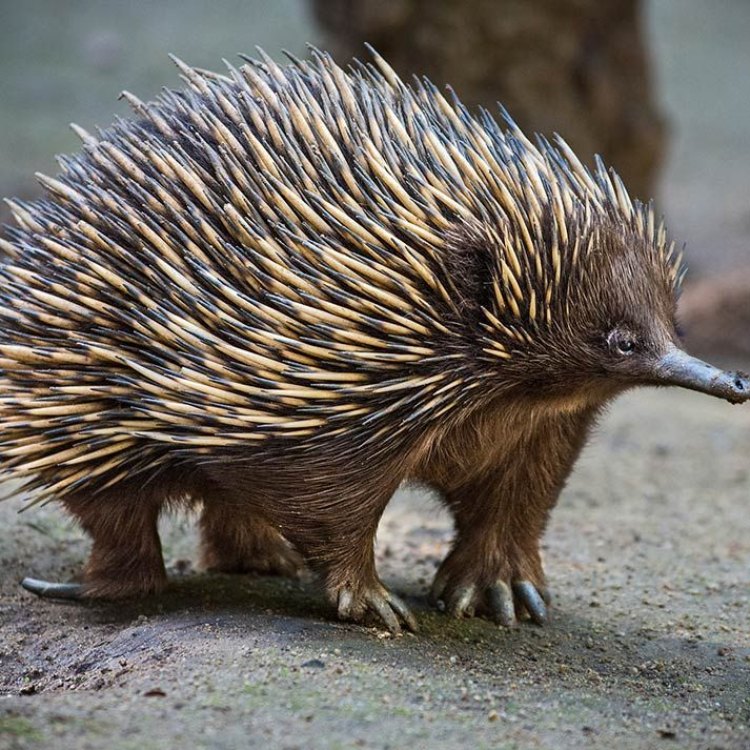
Echidna
- Adult Size: Adult echidnas weigh between 2 and 7 kilograms.
- Average Lifespan: Echidnas have an average lifespan of 14 to 50 years in the wild.
- Reproduction: Echidnas are oviparous, which means they lay eggs. Females lay a single leathery egg into a pouch and incubate it until it hatches.
- Reproductive Behavior: Echidnas have a unique mating behavior where several males form a mating train behind a female. The males compete for the opportunity to mate with the female.
- Sound or Call: Echidnas do not have vocal cords and are generally quiet animals. However, they can emit low grunts or hissing sounds when disturbed or threatened.
- Migration Pattern: Echidnas do not migrate and typically have a small home range.
- Social Groups: Echidnas are solitary animals and do not form social groups.
- Behavior: Echidnas are generally nocturnal and spend most of their time foraging for food. They are well adapted for digging, using their strong limbs and sharp claws to excavate termite mounds and ant nests.
- Threats: Echidnas face several threats, including habitat loss, road accidents, predation by introduced species, and climate change.
- Conservation Status: The conservation status of echidnas varies depending on the species and region. Some species are listed as least concern, while others are listed as vulnerable.
- Impact on Ecosystem: Echidnas play a role in maintaining ecosystem balance by controlling insect populations. They also contribute to soil aeration through their digging behavior.
- Human Use: Echidnas are protected by law in many regions and cannot be kept as pets or hunted. However, they are sometimes used for educational purposes or kept in wildlife sanctuaries.
- Distinctive Features: Echidnas are known for their spiky fur, long snout, and sharp spines on their back. They also have a unique reproductive system and are one of the few mammals that lay eggs.
- Interesting Facts: 1. Echidnas are one of only two types of monotremes, which are egg-laying mammals.
- Predator: Echidnas have few natural predators due to their spiky exterior. However, they may be preyed upon by dingoes, large birds of prey, and introduced predators such as foxes and cats.
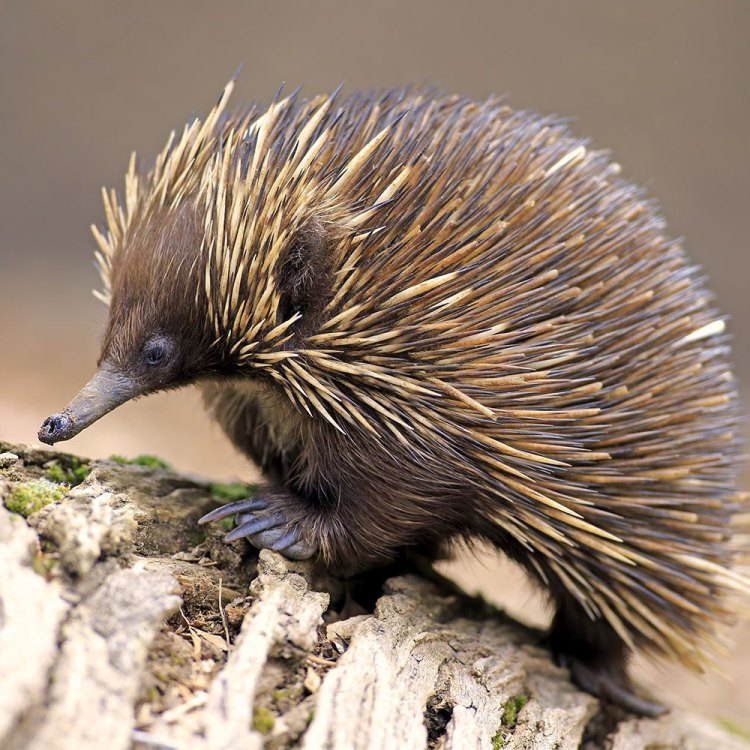
Tachyglossus aculeatus
The Unique Echidna: A Fascinating Egg-Laying Mammal
Nature never fails to amaze us with its variety and diversity. Among all the creatures that inhabit our planet, there are some that stand out for their unique features and behaviors. One such animal is the echidna, a fascinating egg-laying mammal that has captured the attention and curiosity of researchers and animal lovers alike. Let's dive deeper into the world of echidnas and discover what makes them such a remarkable species PeaceOfAnimals.Com.Adult Size and Lifespan
Echidnas are small mammals with a body length of 30 to 45 centimeters and weight between 2 and 7 kilograms. They have a compact body covered in thick, spiky fur and a long, pointed snout. These features, along with their short legs and sharp claws, make them well adapted for their unique lifestyle.
In the wild, echidnas have an average lifespan of 14 to 50 years, making them one of the longest living mammals. This longevity can be attributed to their slow metabolism and low body temperature, which helps them conserve energy and survive in harsh environments.
Reproduction and Mating Behavior
One of the most fascinating aspects of echidnas is their reproductive system. They are oviparous, which means they lay eggs, making them one of only two types of monotremes, or egg-laying mammals. The female echidna lays a single leathery egg into her pouch, where it incubates for about ten days before hatching. The baby, known as a puggle, stays in the pouch for approximately 45 days, feeding on milk secreted from patches on the mother's skin Edible Frog.
But what's even more intriguing is the echidna's mating behavior. During the mating season, several males form a mating train behind a female, where they follow one another to compete for the opportunity to mate with her. This unique behavior is not seen in any other mammal and has puzzled scientists for years.
Sound and Migration Patterns
Echidnas are generally quiet animals and do not have vocal cords, so they do not make any sounds. However, they can emit low grunts or hissing sounds when disturbed or threatened.
Unlike many other animals, echidnas do not migrate and have a small home range of about one square kilometer. They are typically solitary creatures, and once they establish their territory, they stay within it, only leaving to forage for food.
Diet and Behavior
Echidnas are insectivores, meaning they primarily feed on insects such as ants and termites. They have a keen sense of smell and use their long snout to detect their prey. Once they locate their food, echidnas will use their strong limbs and sharp claws to dig into termite mounds and ant nests, using their long, sticky tongue to catch their meal.
These intriguing creatures are also well adapted for digging, thanks to their powerful limbs and sharp claws. They can dig up to three meters deep and can stay underground for extended periods, especially during hot and dry conditions.
Threats and Conservation Status
Unfortunately, echidnas are facing several threats, mainly due to human activities. Habitat loss is one of the major issues affecting these animals, as urbanization and agriculture continue to encroach on their natural habitats. This loss of habitat makes it challenging for echidnas to find suitable areas to forage and breed, impacting their survival.
Road accidents are also a significant threat, as echidnas are slow-moving animals and often fall victim to vehicles on roads. Another significant threat is predation by introduced species such as foxes and cats, which have been brought to Australia, where most echidna species reside. Climate change is also a growing concern, as it can affect the availability of food and shelter for these animals.
The conservation status of echidnas varies depending on the species and region. Some species, such as the short-beaked and western long-beaked echidnas, are listed as least concern by the International Union for Conservation of Nature (IUCN). However, others, like the Eastern long-beaked and Sir David's long-beaked echidnas, are listed as vulnerable, and their populations are declining.
Impact on the Ecosystem
Echidnas play a crucial role in maintaining the balance of the ecosystem they inhabit. As insectivores, they control insect populations, which helps maintain a healthy ecosystem. They also contribute to soil aeration through their digging behavior, which helps with plant growth and nutrient cycling. Without echidnas, there could be an overabundance of insects and difficulties with soil health, ultimately causing a domino effect on the environment.
Human Use and Distinctive Features
Echidnas have been a subject of human fascination for years, and there have been various uses of these creatures by humans. In some regions, echidnas have been hunted for their meat, which is considered a delicacy by some communities. However, as awareness about their importance in the ecosystem grows, hunting has become strictly regulated and is often illegal.
Echidnas are also used for educational purposes and can be found in wildlife sanctuaries, where they are cared for and used to teach people about their unique features and behaviors. However, it's crucial to note that echidnas are protected by law in many regions and cannot be kept as pets.
Besides their egg-laying ability, echidnas are easily identifiable by their distinctive physical features. Their spiky fur, long snout, and sharp spines on their back make them stand out among other mammals. These features not only serve as their protection from predators but also make them a truly unique and fascinating species.
Interesting Facts
There's no denying that echidnas are one of the most interesting creatures on our planet. Here are a few more fascinating facts about these egg-laying mammals:
1. Echidnas are one of only two types of monotremes, which means they are mammals that lay eggs instead of giving birth to live young. The other type is the platypus.
2. Echidnas have been around for millions of years, with fossils dating back 200 million years.
3. The echidna's spines are not just for protection; they also provide insulation, keeping the animal warm in cold weather.
4. The echidna is the only known mammal that uses electroreception, which is the ability to sense electrical impulses from insects.
Predator and Conclusion
While echidnas have few natural predators due to their spiky exterior, they do face threats from human activities. As a protected species in many regions, it's essential that we continue to educate ourselves and others about these fascinating animals to ensure their survival in the wild.
Echidnas have truly earned their place in the animal kingdom, with their unique features, behaviors, and role in maintaining ecosystem balance. These egg-laying mammals continue to amaze and intrigue us, and it's clear that there is still so much we have yet to discover about them. As we strive to preserve and protect our planet and its inhabitants, let us not forget the remarkable and rarely seen echidna.
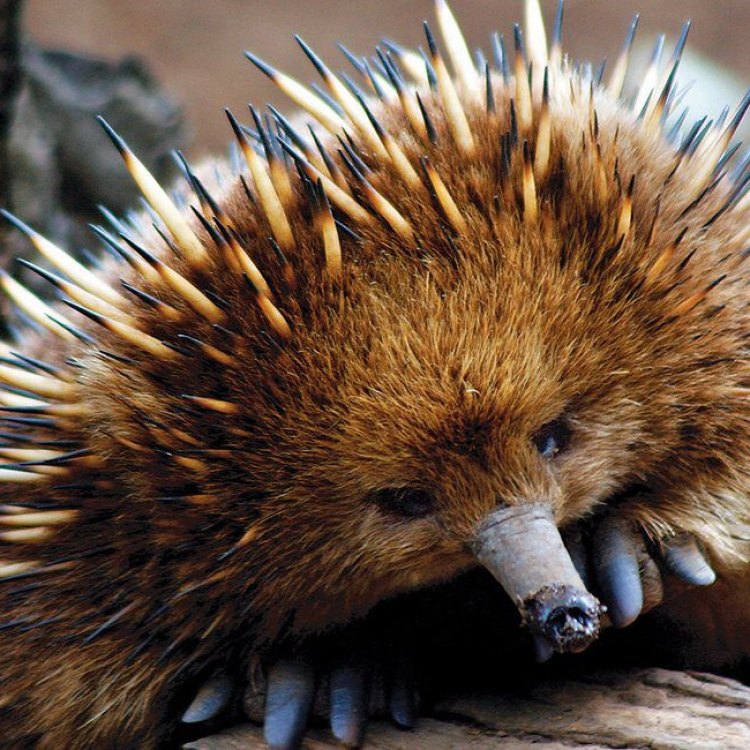
The Fascinating World of Echidnas: Australia's Unique Egg-Laying Mammal
Disclaimer: The content provided is for informational purposes only. We cannot guarantee the accuracy of the information on this page 100%. All information provided here may change without prior notice.

